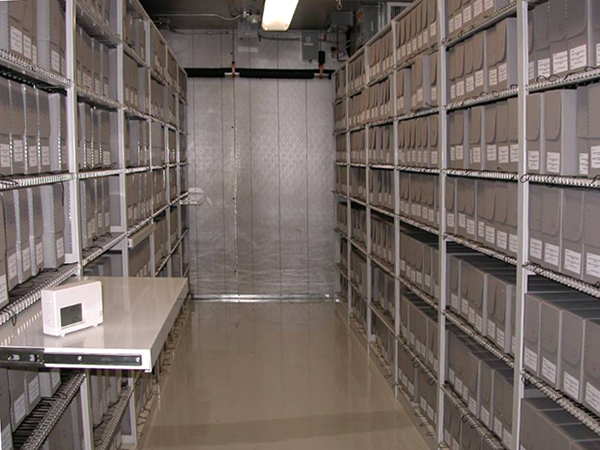
Cold Storage
Cold storage is considered one of the most important strategies for ensuring the long-term preservation of film and color photographs.
A useful resource is the National Park Service's Cold Storage: A Long-Term Strategy for Film-Based Photographic Materials. Discuss your particular collection and resources with a photographic conservator or a motion picture preservation specialist.
- Avoid temperatures crossing the freeze – thaw line of 32°F within the cold storage vault to prevent moisture changes in the film.
- Institutions with significant amounts of film may have cold storage rooms that allow a large quantity of film to be stored on shelving.
- Frost-free refrigerators and freezers may be appropriate for storage of cellulose acetate film with special precautions. Always consult a conservator or preservation specialist about using a refrigerator or freezer to store film.
Cold storage requires special packaging and / or acclimation procedures to prevent harmful condensation from forming on the film when it is removed from cold temperatures to a warmer environment.
- Large storage repositories usually have an acclimation room for this purpose.
- Storage repositories without acclimation rooms or using freezers must allow the film to adjust for 24 hours before removing from its special packaging.
- Refrigerators and freezers can generate high humidity conditions. Special packaging is recommended.
